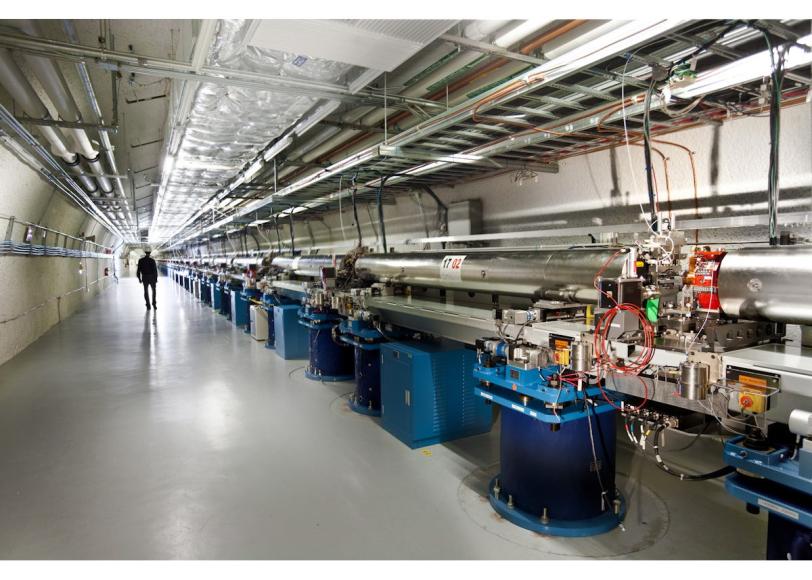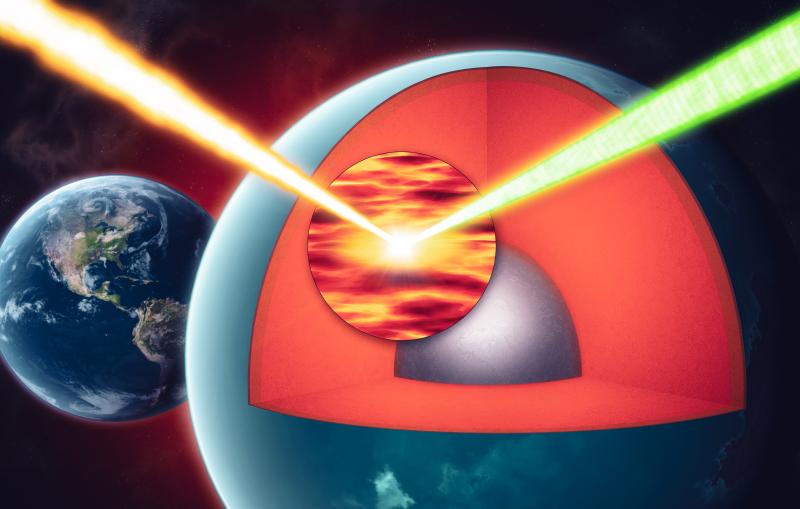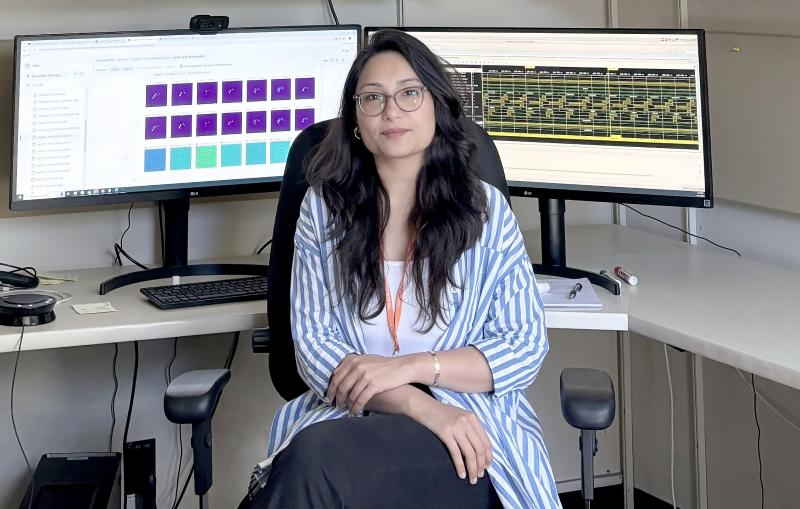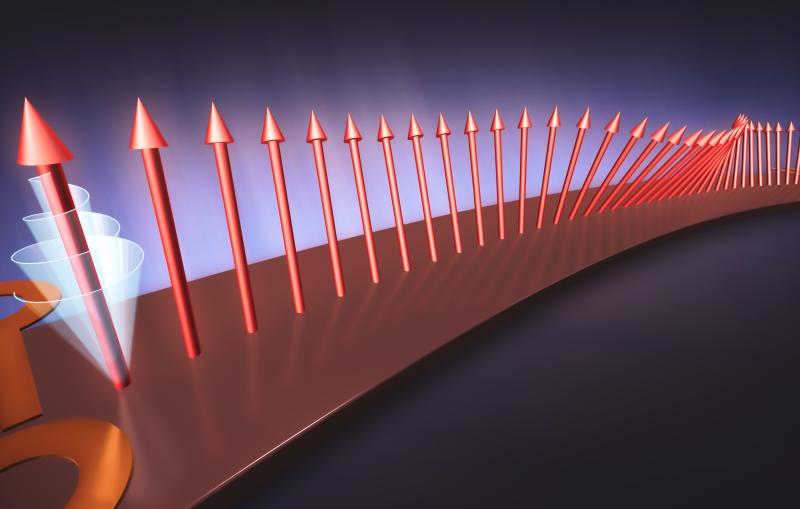LCLS-II Passes Key Milestone in DOE Approval Process
The Department of Energy has approved a preliminary budget, schedule and design plans for the LCLS-II project, an expansion of SLAC’s Linac Coherent Light Source.
By Glennda Chui
The Department of Energy has approved a preliminary budget, schedule and design plans for the LCLS-II project, an expansion of SLAC’s Linac Coherent Light Source. This approval, known as “Critical Decision 1” (CD-1), sets the stage for the development of a more detailed engineering plan for the project.
“DOE’s support for LCLS-II is the direct result of the really exciting scientific results coming out of LCLS almost on a weekly basis in its first two years of operation,” said John Galayda, project director for LCLS-II. “An expansion of a new facility on this scale, so soon after it has turned on, is a gift beyond words.”
The LCLS is the world’s first hard X-ray free-electron laser and one of the most powerful tools ever developed for probing detailed structure and ultrafast changes in atoms, molecules and materials. It accelerates electrons down one-third of the historic SLAC linac and through a series of magnets in an undulator. As the electrons zigzag through the magnets, they emit light in the form of X-rays, which are formed into intense laser pulses a billion times brighter than those of any previous light source, and just a quadrillionth of a second long.
Since the LCLS opened for research in fall 2009, those strobe-light pulses have been used to explore viruses, proteins involved in photosynthesis, novel materials and the fundamental processes at the hearts of atoms and molecules at a scale much smaller and faster than ever before possible.
LCLS-II would roughly double the facility’s capacity. As now planned, it would add another injector gun for generating electrons, a second tunnel for the electrons to rush through, two new undulators for the production of X-rays and a new experimental hall with room for four additional instruments.
Scientists could shut down one beam line for maintenance or repairs while leaving the other open, allowing continual operation.
The DOE considered this expansion so critical that it gave mission-need approval for LCLS-II, a step known as CD-0, just one hour after the LCLS shot X-rays into the far experimental hall for the first time, on April 22, 2010.
The CD-1 approval for LCLS-II was signed on Oct. 14 by William Brinkman, director of the DOE Office of Science, after a successful review of the project in April and a favorable recommendation from the Energy Systems Acquisition Advisory Board in late September.
Three more steps in the DOE project approval process lie ahead. CD-2 approves the baseline design, CD-3 approves the start of construction, and CD-4 marks the official end of construction, allowing operations to start. The current schedule calls for LCLS-II construction to end in 2018 or 2019.
SLAC Director Persis Drell noted that a number of other free-electron laser facilities will open over the next half-dozen years. Plans call for the LCLS to continue expanding, to a total of four X-ray sources and 10 instruments by 2025, so it can remain competitive and keep up with the worldwide demand for this important, wide-ranging research tool.
“The CD-1 approval for LCLS-II is an important step in that process,” Drell said, “and it’s a tribute to the hard work and vision of the people involved in making this happen. I’m looking forward to the exciting science that this expansion will enable in the years ahead.”

(Photo by Brad Plummer)





